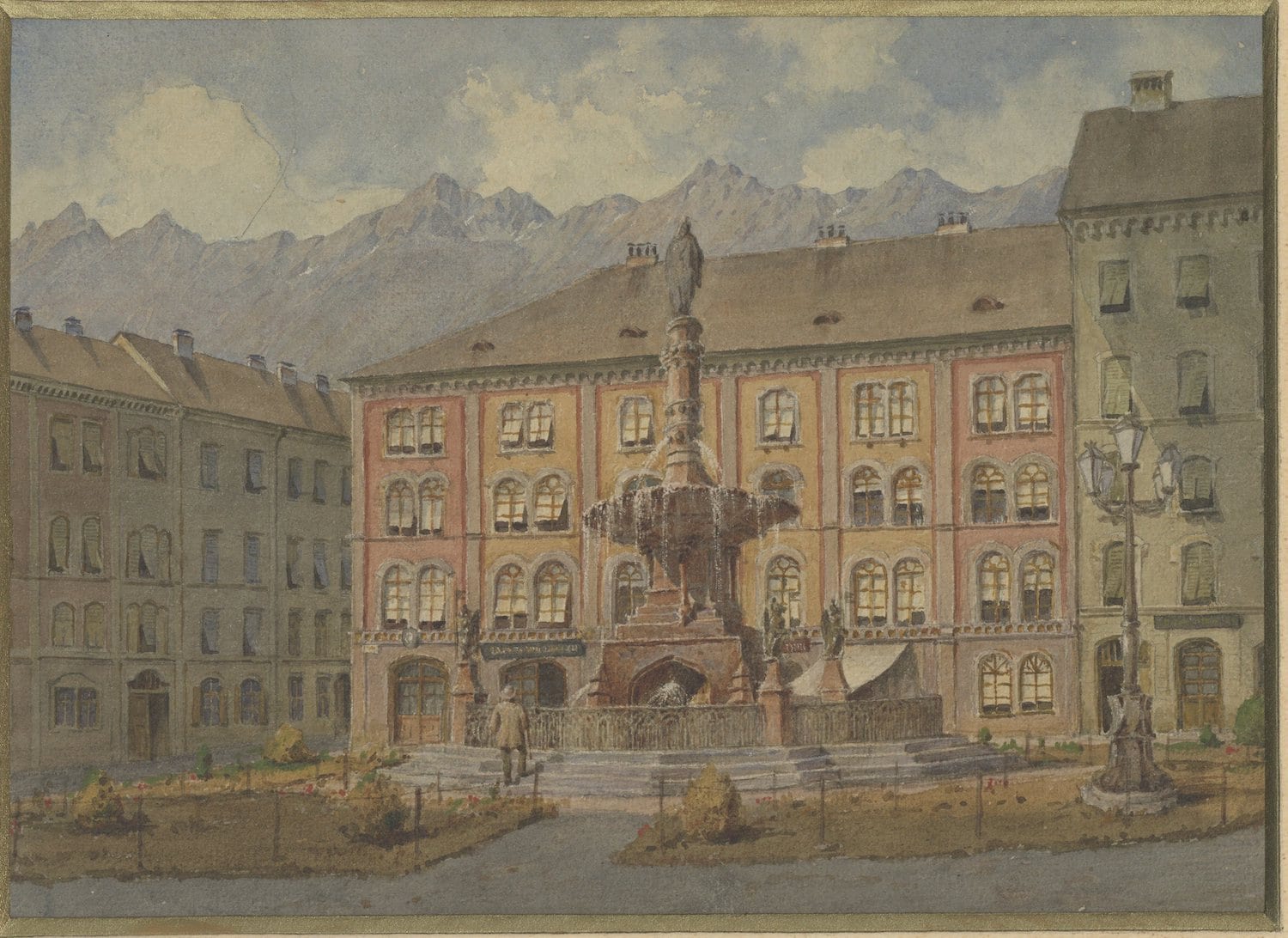Rudolf of Habsburg, symbol of an era
Rudolf von Habsburg: Politik und Sitten der Zeit
The intelligent, liberal-minded and sensitive Crown Prince Rudolf (1858 - 1889) was regarded as the Favourite of the nations of the Habsburg Empire. In many respects, his life can be read as exemplary for the period between 1848 and the outbreak of the First World War. The struggle between new political ideas and the traditional, the enthusiasm for science, art and culture as well as customs and morals, which also characterised society and everyday life in Innsbruck, are reflected in the figure of Emperor Franz Josef I's son. The vast majority of Innsbruckers did not have the material means or the status of Habsburgs, but the fashions and trends under which they lived were the same.
Seit dem Amtsantritt Franz Josefs I. hatte sich die Donaumonarchie räumlich und sittlich verändert. 1866 war Österreich nach Königgrätz aus dem Deutschen Bund was eliminated. The so-called Compromise with Hungary took place in 1867. The Italian territories, with the exception of Trentino and the port of Trieste, were lost. The endeavours of the individual ethnic groups for national independence did not stop at Tyrol, as the Trentino region between Salurn and Riva on Lake Garda also included an Italian-speaking part of the country. In the Tyrolean provincial parliament, Italian-speaking members of parliament, so-called Irredentistsmore rights and autonomy for what was then South Tyrol. In Innsbruck, there were repeated tensions and clashes between Italian and German-speaking students. The WallschenThis term for Italians persists to this day in Tyrol and they were considered dishonourable, unreliable and lazy.
Rudolf was considered to be very well-read and educated. He was interested in a wide range of subjects, in keeping with the spirit of the educated middle classes. In addition to Greek and Latin, he also spoke French, Hungarian, Czech and Croatian. As a private citizen, he devoted himself to writing press articles, science and travelling through the countries of the monarchy. He organised the publication of of the Kronprinzenwerka natural science encyclopaedia. Volume 13 was published in 1893 and dealt with the crown land of Tyrol.
He was also politically open to new ideas. Rudolf wrote liberal articles in the "Neue Wiener Tagblatt" unter einem Pseudonym. Er wollte unter anderem Grund- und Bodenreformen vorantreiben durch stärkere Besteuerung der Großgrundbesitzer und den einzelnen Nationalitäten des Habsburgerreichs mehr Rechte zugestehen. Besonders im konservativen, ländlichen Tirol und unter Militärs war er sehr unbeliebt. Bei den liberal gesinnten Innsbruckern hingegen galt er als Hoffnung für eine Erneuerung der Monarchie im Sinne eines modernen, föderalen Staates. Der Rudolfsbrunnen in Innsbruck am Boznerplatz erinnert zwar nicht an den Kronprinzen, bei seiner Einweihung war er aber zugegen.
Despite, or perhaps because of his aristocratic background, Rudolf's private life was turbulent, but not atypical of the time, in which parents and teachers were less approachable educators and more distant figures of respect. Children were brought up strictly. Neither teachers nor parents shied away from corporal punishment, even if there were limits, laws and rules for the use of domestic violence. Militarism and a focus on future gainful employment prevented the kind of childhood and youth we know today. Rudolf's early years, when he had to undergo a military education under General Gondrecourt at the request of Emperor Franz Josef, were also less than luxurious. It was only after his mother Elisabeth intervened that harassment such as water cures, drill in the rain and snow and being woken up with pistol shots were removed from the six-year-old crown prince's daily programme.
Wie viele seiner Zeitgenossen fand sich auch Rudolf als Erwachsener in einer unglücklichen, da arrangierten Ehe wieder. Das 19. Jahrhundert war nicht das Zeitalter der Liebesheiraten, auch wenn Romantik und Biedermeierzeit gerne dahingehend gerühmt werden. Aristokraten und Mitglieder des hohen Bürgertums heirateten aus Standesdünkel und mit dem Ziel, die Dynastie zu erhalten. Dienstboten, Hausmädchen, Knechten und Mägden war die Hochzeit lange untersagt. In der Oberschicht waren Ehefrauen nichts weiter als Schmuck ihres Gatten und Oberhaupt des Haushaltes. Erst wenn der oft ältere Ehemann verstorben war, konnten auch Witwen ihr Leben abseits dieser Rolle genießen.
Throughout his life, Rudolf was not averse to the fairer sex outside of marriage. In the last months of his life, Rudolf had an affair with Mary Vetsera, a girl from the rich Hungarian aristocracy who was considered particularly beautiful and was only 17 years old. At this time, he was already suffering from depression, gonorrhoea, alcoholism and morphine addiction. On 30 January 1889, Rudolf met Vetsera after spending the previous night with his long-term lover, the prostitute Maria "Mizzi“ Kaspar, verbracht hatte. Unter nie vollständig geklärten Umständen tötete er zuerst die junge Frau und dann sich selbst mit einem Schuss in den Kopf. Von der Familie Habsburg wurde der Selbstmord nie anerkannt. Zita (1892 – 1989), die Witwe des letzten Kaisers Karl, sprach noch in den 1980ern von einem Mordanschlag. Wie Rudolf hielten es auch viele seiner Untertanen. Zwar konnte sich kaum jemand rühmen, eine ungarische Adelige als Gespielin für sich zu beanspruchen, eine Liebhaberin, so waren die Sitten nicht so, wie es Pfarrer täglich von der Kanzel predigten. Ehemänner tobten sich sexuell bei Affären mit Dienstmädchen, Geliebten und Prostituierten aus.
The discussion surrounding the burial of the heir to the throne and his mistress revealed the Christian morals and double standards of the Habsburg Empire. Suicide was considered a grave sin and actually prevented a Christian burial. Vetsera was buried inconspicuously in a small grave by the cemetery wall in Heiligenkreuz near Mayerling, while Rudolf was given a state funeral after imperial intervention with the Pope and was laid to rest in the Capuchin crypt, probably the most famous burial place of the Habsburgs in Vienna.
Sights to see...
Rudolf's Fountain
Boznerplatz
